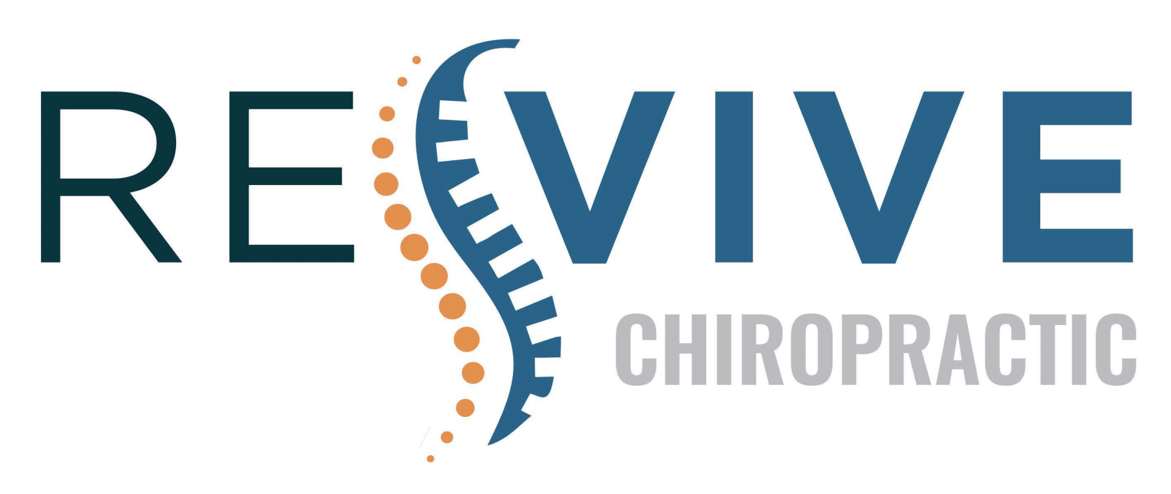You might not realize how essential mobility and flexibility are to your daily life until they start to decline. Improving these aspects can enhance your physical performance and prevent injuries, making it easier to enjoy everyday activities. By incorporating simple stretches and targeted exercises into your routine, you can begin to notice significant changes. But understanding the best approaches and avoiding common pitfalls will make all the difference. So, what specific techniques can you implement today to start your journey toward better mobility and flexibility?
Understanding Mobility and Flexibility
To really grasp the concepts of mobility and flexibility, it helps to understand their distinct roles in your physical health. Mobility refers to your ability to move freely and easily, often involving the range of motion in your joints and how well your body can perform functional movements.
Flexibility, on the other hand, focuses on the elasticity of your muscles and tendons, allowing them to stretch and lengthen effectively.
Think of mobility as the overall capacity to move through various positions and activities without restrictions. It combines strength, control, and coordination, which means you need to engage multiple muscle groups and joints simultaneously.
For instance, when you perform a squat, good mobility guarantees you can lower your body smoothly while maintaining proper form.
Flexibility plays an important role in this process. It allows your muscles to stretch adequately, which can prevent injuries and enhance your overall performance. When your muscles are flexible, they can adapt to various movements and demands, making everyday tasks easier.
Incorporating both mobility and flexibility into your routine is vital for maintaining a balanced and functional body. You might notice that improving one often positively affects the other.
For example, enhanced flexibility can lead to better mobility, and vice versa. By understanding these concepts, you're better equipped to design a training program that targets both areas, contributing to your long-term physical health and overall well-being.
Benefits of Increased Mobility
Increased mobility brings a multitude of benefits that can greatly enhance your daily life. When you improve your range of motion, you'll notice a boost in your overall physical performance. Whether you're lifting groceries, playing with your kids, or participating in sports, enhanced mobility allows you to move with greater ease and efficiency.
You'll also experience a reduction in the risk of injury. Improved mobility helps your joints and muscles work more harmoniously, minimizing strain and wear and tear. This means you're less likely to pull a muscle or sprain an ankle while engaging in everyday activities.
Additionally, increased mobility can lead to better posture. As your body becomes more flexible and balanced, you may find it easier to maintain proper alignment. This can alleviate discomfort in your back, neck, and shoulders, leading to a more comfortable day-to-day experience.
Moreover, the psychological benefits shouldn't be overlooked. When you feel more mobile, you're likely to experience a boost in your confidence and mood. You'll be more inclined to participate in social activities, try new exercises, or even set off on outdoor adventures.
Finally, enhanced mobility can improve your overall quality of life. It allows you to stay active as you age, fostering independence and reducing the likelihood of chronic conditions.
Embracing mobility not only enriches your physical capabilities but also opens doors to a more fulfilling lifestyle. So, why not start incorporating mobility practices into your routine today?
Essential Stretching Techniques
Improving your mobility is just the first step; incorporating effective stretching techniques into your routine can further enhance your flexibility and overall physical performance. To get started, focus on two main types of stretches: static and dynamic.
Static stretching involves holding a stretch for a specific period, usually around 15 to 30 seconds. It's most effective when your muscles are warm, so try it after your workouts. For instance, to stretch your hamstrings, sit on the floor, extend one leg, and reach toward your toes. You'll feel a gentle pull in the back of your thigh.
Remember to breathe deeply and avoid bouncing, as that can lead to injury.
Dynamic stretching, on the other hand, is all about movement. It's perfect for warming up before activities. Incorporate leg swings, arm circles, or torso twists into your routine. These movements help increase blood flow and prepare your muscles for action.
For example, while standing, swing one leg forward and back, gradually increasing the range of motion.
You should also consider incorporating stretches that target specific muscle groups. Focus on areas where you feel tightness, like your hips, shoulders, or lower back. A simple cat-cow stretch can be beneficial for your spine and core, while a standing quad stretch helps open up your hips.
Strengthening Exercises for Flexibility
How can you boost your flexibility while building strength? The answer lies in incorporating specific strengthening exercises that not only enhance your muscle power but also improve your range of motion. When you focus on these exercises, you'll find that they help you achieve a more flexible and mobile body.
One effective way to start is with bodyweight squats. As you lower into the squat, your hips and knees work through their full range of motion, promoting flexibility in those areas while also building strength in your legs.
Next, try lunges. They target your hip flexors, quads, and hamstrings, and the deep stretch at the bottom of the lunge helps maintain flexibility.
Incorporating resistance bands can also be beneficial. For example, banded side steps will strengthen your glutes while encouraging hip mobility.
Another great exercise is the deadlift. It focuses on your lower back, hamstrings, and glutes, and when performed correctly, it requires a significant range of motion, enhancing your flexibility.
Lastly, consider adding planks to your routine. While they primarily strengthen your core, they also encourage proper body alignment and stability, which is essential for overall flexibility.
Daily Routines for Better Mobility
A consistent daily routine can considerably enhance your mobility and flexibility. Incorporating specific movements and stretches into your day will keep your body limber and responsive. Start each morning with a gentle warm-up; this could include a few minutes of dynamic stretches such as arm circles and leg swings. Engaging in these movements gets your blood flowing and prepares your muscles for the day ahead.
During your day, try to integrate mobility-focused activities. For instance, if you work at a desk, set a timer to remind you to stand up and stretch every hour. Simple stretches like reaching for the ceiling or bending to touch your toes can make a significant difference.
Consider adding a quick 5-10 minute routine of yoga or Pilates in the afternoon to improve your flexibility and core strength.
In the evening, take time to wind down with static stretches. Focus on major muscle groups such as hamstrings, quads, and shoulders. Hold each stretch for at least 20-30 seconds, breathing deeply to maximize the benefits. This not only promotes flexibility but also helps to ease any tension built up during the day.
Finally, don't underestimate the power of mobility drills. Dedicate a few minutes each day to practice hip openers and spinal twists, enhancing your overall range of motion.
Mindfulness Practices for Flexibility
Flexibility often flourishes when paired with mindfulness practices that enhance your body awareness and mental focus. By integrating mindfulness into your stretching routines, you can deepen your physical practice while promoting a calm mindset.
Start by finding a quiet space where you can focus entirely on your body and breath.
Begin with a few minutes of deep breathing. Inhale slowly through your nose, allowing your abdomen to expand, then exhale gently through your mouth. This simple act of focusing on your breath grounds you in the present moment. As you breathe, pay attention to how your body feels. Notice any areas of tension or stiffness, and acknowledge them without judgment.
When you move into your stretching routine, maintain this mindfulness. Instead of rushing through each pose, take your time and connect with each movement. Visualize the muscles you're targeting. As you stretch, keep your breath steady and allow it to guide you deeper into each posture. If you encounter discomfort, pause and breathe into that area, allowing it to soften.
Consider incorporating practices like yoga or tai chi, which emphasize mindful movement. These activities not only promote flexibility but also encourage you to listen to your body and respect its limits.
Common Mistakes to Avoid
When practicing mindfulness in your stretching routine, it's easy to overlook some common mistakes that can hinder your progress. One of the biggest errors is rushing through your stretches. Flexibility requires patience, so take your time to hold each stretch for the recommended duration. When you rush, you don't allow your muscles to relax and extend properly, which can limit your gains.
Another mistake is neglecting proper alignment. If you're not mindful of your body's position, you might end up straining muscles or joints. Pay attention to your form; keep your back straight and engage your core to prevent injury.
Also, don't forget to breathe! Holding your breath can create tension in your body, countering the benefits of stretching. Focus on deep, controlled breaths throughout your routine.
You might also be guilty of overstretching. While pushing your limits is part of growth, going too far can lead to injury. Listen to your body and know when to ease off.
Finally, avoid skipping your warm-up. Jumping straight into stretching without adequately warming up can shock your muscles and lead to stiffness or strain.
Tracking Your Progress
Tracking your progress is essential for improving your mobility and flexibility.
Start by setting clear goals that guide your journey, then use a journal to document your workouts and achievements.
Regularly measuring your progress helps you stay motivated and make necessary adjustments along the way.
Set Clear Goals
Setting clear goals is essential for enhancing your mobility and flexibility. When you establish specific, measurable, achievable, relevant, and time-bound (SMART) goals, you create a roadmap to success. Start by identifying what you want to improve. Do you want to touch your toes, achieve a deep squat, or perform a specific yoga pose? Defining these aspirations sets the stage for your progress.
Next, break your goals into smaller, manageable steps. Instead of aiming for a full split right away, aim to increase your range of motion gradually. For instance, set a weekly target to stretch for a certain duration or complete specific exercises. This not only keeps you motivated but also allows you to celebrate small victories along the way.
Regularly assess your progress. Check in with yourself weekly or bi-weekly to evaluate how close you're to your goals. Adjust as needed; if something isn't working, switch it up.
Use a Journal
Maintaining a journal can greatly enhance your journey toward improved mobility and flexibility. By regularly documenting your workouts, stretches, and exercises, you create a visual record of your progress. This not only motivates you but also helps you identify patterns in your training that contribute to your success.
As you write down your daily activities, note any improvements you feel or see. Are you able to reach a bit further in your stretches? Are your movements becoming smoother? This clarity will help you understand what works for you and what doesn't.
Don't just focus on physical achievements; jot down how you feel mentally and emotionally, too. Reflecting on your mindset can reveal how your flexibility routine impacts your overall well-being. It'll keep you engaged and committed to your goals.
Set aside time each week to review your entries. This practice allows you to celebrate your milestones and adjust your strategies as needed. Remember, consistency is key.
Your journal acts as a roadmap, guiding you through your flexibility journey and ensuring you stay on track. So grab a pen and start documenting today!
Measure Regularly
Measuring your progress at regular intervals can greatly enhance your flexibility journey. By keeping track of your improvements, you get a clearer picture of your growth and motivation to keep pushing forward.
Start by setting specific benchmarks—like how far you can reach in a stretch or how deep you can go into a pose. You can use a simple app or a dedicated notebook to log your measurements. Document your starting point and aim to check in weekly or bi-weekly.
This regular assessment allows you to identify trends and adjust your routine as needed. If you notice a plateau, it might be time to switch up your stretches or increase your intensity.
Don't forget to celebrate small victories! Recognizing these milestones can keep your spirits high and encourage you to stay committed.
Conclusion
Incorporating mobility and flexibility exercises into your daily routine can transform your physical performance and overall well-being. By understanding the importance of stretching, strengthening your muscles, and practicing mindfulness, you'll pave the way for a more active and fulfilling lifestyle. Remember to set specific goals and track your progress, as this will keep you motivated on your journey. Start today, and you'll soon feel the benefits of increased mobility and flexibility in every aspect of your life!



